#Haunted Salisbury
Text
Haunted Salisbury South Australia
Haunted Salisbury South Australia
Haunted Salisbury: South Australia is the culmination of many years of research into the haunted history of Salisbury, South Australia by award-winning paranormal historian, Allen Tiller. In this book, Allen Tiller investigates the origins of historic local hauntings and crimes, Salisbury’s founding, and the people who shaped the City of Salisbury, some of whom,…

View On WordPress
5 notes
·
View notes
Quote
The basic elements of a proper Gothic romance require a heroine of pure heart that must travel, often across the world, guided by her love for a dark, brooding gentleman of aristocratic origins. They will often take residence in a haunted building in which a deep secret is stored (often involving wealth, treasure, or ancestral secrets) only to be revealed by our heroine's journey. Often the characters represent sides of a single self. Almost as if the edifice was the mind, the self and its deepest catacombs, the id — with the festering horrors of the past.
Historically, the Romantic movement was a rebellious tide crashing against the dry, uncaring shores of reason. A movement that was sparked by the poetry of ruins and decay and the inexorable attraction of human emotion at its basest.
Thus, a Gothic romance lives and dies on two things: the fortitude of its heroine and the power of its villain. And so, casting our film became quite a complex process. The list of actors that I really wanted was quite short — I hoped for a heroine that was sophisticated intellectually but emotionally vulnerable to the myth of perfect love (even if she denied it publicly). I needed a character with a very strong backbone but a certain innocence to the ways of the world. She had a fierce mind, but her knowledge of the world all came from books and imaginary characters. When Mia Wasikowska became a candidate I was elated: In her past work, she always struck me as someone that seemed to be very assured of herself but timid and private. And then, Jessica Chastain and Tom Hiddleston emerged as the perfect Gothic villains — able to deliver the tough moments but capable of illuminating their actions to reveal the vulnerability, the humanity, beneath. There needed to be a reason and a true humanity behind their actions, no matter how grotesque.
Guillermo del Toro discussing the casting of Crimson Peak in the Foreword to Crimson Peak: The Art of Darkness by Mark Salisbury
#guillermo del toro#crimson peak#crimson peak 2015#mark sallisbury#tom hiddleston#mia wasikowska#jessica chastain#gdt#currently reading#🪳
462 notes
·
View notes
Text
It’s Halloween! Or in Tudor times: All Hallows’ Eve! To honor my most dreaded holiday (I HATE answering the door…) I wanted write about some lesser known Tudor ghosts:
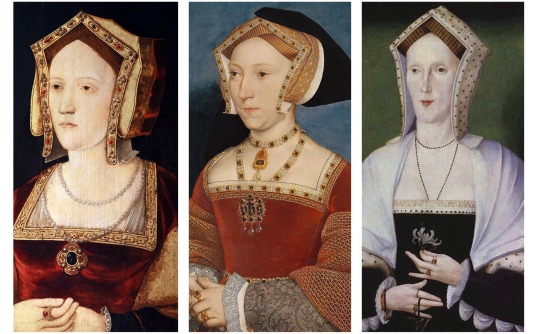
Yes friends! Today we are talking about the ghosts of Catherine of Aragon, Jane Seymour and Margaret Pole! We often hear about the various places that the ghost of Anne Boleyn is said to haunt (some of which there is no evidence of her visiting during life) and Katherine Howard in the haunted gallery of Hampton Court Palace, but we hardly ever hear about these ladies. Let’s start with Catherine:

It is said that the ghost of Queen Catherine haunts the place where she died. In January of 1536, Catherine of Aragon died in her rooms at Kimbolton Castle.

She had been there since Henry VIII sent her there in 1534. Catherine was Henry’s first wife and in 1533 he had their marriage declared invalid so that way he could marry his second wife, Anne Boleyn. Catherine refused to accept the annulment (and her daughter’s subsequent illegitimacy) so Henry sent her multiple different castles in various states of decay in order to try and break her. It did not work and Catherine went to her death still referring to herself as the true queen of England. According to the stories, Catherine’s ghost is said to haunt the chambers in which she died.

It has been many years since 1536 (486 to be exact) and over time the castle has seen some changes. One of the changes had to do with the castle’s leveling. The way the floors were set in 1536 is not the way they are set now, but the queen’s ghost doesn’t seem to notice as her head and shoulders are said to appear coming from the floor in one room and her legs are seen coming from the ceiling below! Catherine of Aragon’s ghost is still walking the same path she walked during life. This could be a sign of residual haunt, meaning that Catherine’s energy imprinted on the land and the building kind of like a recording. As time goes on this “recording” plays over and over completely unaware of the passage of time.
Next up is Queen Jane!

Jane was wife number three of six and the only one of Henry’s wives to give birth to a son that survived infancy. On October 12th, 1537, Queen Jane gave birth to a son, the future Edward VI at Hampton Court Palace. Sadly Jane died only twelve days after her son was born due to complications from the birth (probably puerperal fever). According to legend Jane appears on the anniversary of her son’s birth, wearing white and carrying a lit candle. She is seen walking down the Silverstick stairs, which once led to the room Edward was born in.

Many people believe that the late queen’s ghost is out searching for her son who never got the chance to know.
Now on to Margaret!

Margaret Pole was the daughter of George Plantagenet, Duke of Clarence and younger brother of Edward IV. George was executed when Margaret was a child, Margaret also lost her brother to a similar fate years later leaving Margaret as one of the only true Plantagenet left. She was made the Countess of Salisbury in her own right and was very close with Henry VIII’s oldest daughter, Mary. Margaret was Mary’s governess, but they were separated due to Mary’s refusal to comply with the annulment and the break with Rome. Margaret’s son, Reginald Pole, wrote some scathing pieces condemning Henry VIII’s break from Rome. Reginald was in Rome so Henry could not get to him, so he went after Margaret instead. He accused her of treason and had her sent to the Tower of London. Margaret was in her sixties. Margaret denied being a traitor and it is said that she carved this on the wall of her prison, “For traitors on the block should die; I am no traitor, no, not I! My faithfulness stands fast and so, Towards the block I shall not go! Nor make one step, as you shall see; Christ in Thy Mercy, save Thou me!”

On May 27th, 1541, Margaret Pole was executed. Reports of her execution vary, but most agree on two things Margaret professed her innocence and that it was particularly gruesome. It is said that the executioner was not very skilled and kept missing the Countess’s neck. Eustace Chapuys writes that “a wretched and blundering youth who literally hacked her head and shoulders to pieces in the most pitiful manner” Margaret is currently buried in the Chapel of St. Peter’s Ad Vincula in the Tower of London. She was beatified by the Catholic Church in the 19th century.

It is said that her ghost is seen on the anniversary of her execution, often times re-“living” her horrific end. Another story told is that (also on the anniversary of her death…) a shadow of an axe is seen on the inner wall that faces where she was executed. The shadow stays the whole time, only disappearing the next day.
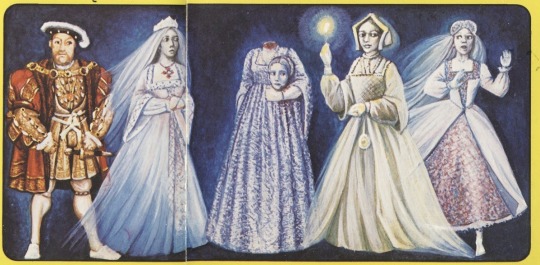
So that’s the stories of some lesser known Tudor ghosts! Happy Halloween everyone!
#catherine of aragon#katherine of aragon#catalina de aragon#katharine of aragon#queen catherine of aragon#jane seymour#queen jane seymour#margaret pole#blessed Margaret pole#hampton court palace#the tower of london#the tower#kimbolton castle#ghosts#ghost stories#halloween#all hallows eve#halloween 2022#anne boleyn#mary i#the tudors#henry viii#tudor history#edward vi of england#edward vi#edward iv#wars of the roses#tudor portraits#tudor period#tudor dynasty
66 notes
·
View notes
Text
Haunted States of America: Utah

The Utah UFO Display: A Biologist's Report (1974) by Frank B. Salisbury, with data from the files of Joseph Junior Hicks, foreword by J. Allen Hynek
You may notice this is not a book about ghosts. Unfortunately, we do not have any books about ghost stories in Utah, so instead we bring to you a book about UFOs. Dr. Salisbury from Utah State University evaluates reports about unidentified flying objects and possible alien sightings in the Uintah Basin in northeast Utah.
We have hundreds of books about UFOs, so we are sharing some of our bibliographies and encyclopedias on the subject:
The UFO Literature: A Comprehensive Annotated Bibliography of Works in English (1985) by Richard Michael Rasmussen
UFOs and the Extraterrestrial Contact Movement: A Bibliography (1986) by George M. Eberhart
UFO: The Definitive Guide to Unidentified Flying Objects and Related Phenomena (1994) by David Ritchie
The Browne Popular Culture Library (BPCL), founded in 1969, is the most comprehensive archive of its kind in the United States. Our focus and mission is to acquire and preserve research materials on American Popular Culture (post 1876) for curricular and research use. Visit our website at https://www.bgsu.edu/library/pcl.html.
5 notes
·
View notes
Text

Hello!!! I’m having this to post itself, so if you tagged me thank you, you’re probably in my tags back;)
I’ve been a bit away from these dynamics but it’s because I’m currently writing chapter 9 of my ballet AU and I didn’t want to spoil anything from chapter 6, which will be up by Oct 28th!!
Therefore, this is one of the few sentences that don’t give away the plot and it is part of Simon’s back story. In this fic, he was adopted by Ebb when he was like 10, but he does know his Salisbury family, this is about that:
Being queer wasn’t something I expected from myself since I never considered it, so I was surprised when I realise I was; the bit that embarrasses me a bit is that I don’t know which kind of queer. (Not that it matters or that I care about labelling me anymore.) Point is, it doesn’t haunt me. I’m proud of it. I’m proud of belonging somewhere with people just as confused as me.
Mum was estatic when I told her I was queer. She asked me which label I liked, and when I told her none she was so happy. She cried even. Hell, she even called Grandma and she was excited as well. She cried too and screamed at me over the phone. A few hours later, she made us come to her place and she received me with a rainbow cake. We ated it next to a photograph Grannie has on the living room where it’s just Mum, Uncle Jamie, her and I.
I still have to edit the chapter and continue with the rest of the fic, but this will be it because chapter 9 explains a lot of shit!!
After this, there’ll be a lot of angst, hurt/comfort, breakdowns, friendship problems and a bit of SnowBaz’s backstories:)
Now tagging: @artsyunderstudy @wellbelesbian @excalisbury @bazzybelle @erzbethluna @castawaypitch @elans-art21 @letraspal @ionlydrinkhotwater @ivelovedhimthroughworse @ileadacharmedlife @fatalfangirl @facewithoutheart @forabeatofadrum @martsonmars @captain-aralias @foolofabookwyrm-activated @aristocratic-otter @palimpsessed @kohatenz @nightimedreamersworld @urban-sith @dragoneggos @johnwgrey @cutestkilla @sillyunicorn @tea-brigade @katmiscellanious @ineffable-grimm-pitch @ic3-que3n @takitalks @aroace-genderfluid-sheep @bookish-bogwitch @moodandmist @henreyettah @basiltonbutliketheherb @mostlymaudlin @yeonjunenby @hushed-chorus @whogaveyoupermission @angelsfalling16 @whatevertheweather @you-remind-me-of-the-babe
#simon snow#snowbaz#baz pitch#carry-on#baz x simon#ballet au#cobb 2022#carry on big bang 2022#six sentence sunday
52 notes
·
View notes
Note
Whats your favorite holiday song
Hehehe friend you have no idea what you've just unleashed /j
You did not specify which holiday so I will be giving you both Halloween and Christmas songs
Halloween:
Thriller by Michael Jackson
Spooky Scary Skeletons by Andrew Gold (both the original and the Undead Tombstone remix)
The Alien by Ben Salisbury and Geoff Barrow. It's from the Annihilation soundtrack and honestly most of the songs from that movie are perfect for Halloween
Danse Macabre by Camille Saint-Saëns
Grim Grinning Ghosts (from the Haunted Mansion ride)
Funeral March of a Marionette by Charles Gounod
Christmas:
Christmas Eve/Sarajevo 12/24 and A Mad Russian's Christmas both by Trans-Siberian Orchestra
You're a Mean One, Mr. Grinch by Thurl Ravenscroft
Linus and Lucy by the Vince Guaraldi Trio
The Christmas Song by Nat King Cole
Um...that's all I can think of at the moment
Thanks for the ask!
#i clearly don't have a favorite holiday /s#a lot of the halloween songs are based more on vibes rather than being meant specifically for halloween#emmy's music bs#emmy's inbox
4 notes
·
View notes
Text

the deep sea is a haunted house | 2h15 | link to playlist on spotify
Introduction: Sea Spray
Fortress Inquisitorius - Stephen Barton, Gordy Haab (Jedi: Fallen Order)
Islands - Cosmo Sheldrake
Caves - CLANN
Moonsea - PHILDEL
Carrion Comfort - aeseaes
Water Witch - The Secret Sisters, Brandi Carlile
Mermaids - Florence + the Machine
Rusalochki - Go_A
Hugsja - Ivar Bjørnson & Einar Selvik
The Ocean - Clinton Shorter (The Expanse)
Interlude: Rolling
Pliocene - Cosmo Sheldrake
Mermaid - Skott
What the Water Gave Me - Florence + the Machine
The Deep - PHILDEL
Mountains - Hans Zimmer (Interstellar)
Her & the Sea - CLANN
Aquarius - Lor
Sunset - HiTnRuN (Ad Vitam)
Jedi Starfighter - Stephen Barton, Gordy Haab (Jedi: Fallen Order)
The Beach - Ben Salisbury, Geoff Barrow (Annihilation)
Come Away to the Water - Glen Hansard
Shallows - Daughter
Inner War - The Rodeo (Ad Vitam)
Waterbound - Michael McGoldrick
The Ghost on the Shore - Lord Huron
Black Moon / Silver Waves - Phosphorescent
Interlude: City Rain
Salt and the Sea - The Lumineers
We Sink - Of Monsters and Men
Never Let Me Go - Florence + the Machine
Deep Water - Lyves
A Mermaid in Lisbon - Patrick Watson, Teresa Salgueiro
Conclusion: At Sea
Hype week continues. The playlist actually originated as a Spotify mix, literally called 'Ocean Mix' that was hilariously about 30% thematically appropriate songs with the word ocean/sea/water in them, 30% random songs from my own likes, and 30% ocean sounds. The mix is actually great, I still listen to it, but I wanted to wrestle this into something more coherent for sharing. While there are just some sort of random selections just based on themes/lyrics, I think, with some shuffling around, that I got it to mirror at least the mood beats of the two fics. I'm actually pretty proud of that. Occasionally when I really hated my writing, I'd be like 'well, at least there's the playlist'.
(And apparently adding Florence + the Machine to fandom playlists is cringe, according to the youths, but these aren't even all the songs she sings about drowning so...)
#dark ocean duology#hyping myself up because I'm the only one who can!#thanks to the 4 people who have already liked it#one is me lol (this is clearly not my premium account with like 10 years of history made a separate account for fandom)#but the other 3 people! I hope you're enjoying it sorry for all the shuffling around#things should be pretty set in stone now
2 notes
·
View notes
Text
Every picture tells a story, or so it’s said, and the photo of a smirking Vladimir Putin shaking hands with the Saudi crown prince, Mohammed bin Salman, at the opening game of the men’s football World Cup in Moscow in June 2018 carried a clear warning for the west.
The message, for those who cared to heed it: Saudi Arabia, nurtured by the British in the days of empire, defended by the US against Saddam Hussein and Iran, and forgiven its close connections to the 9/11 terror attacks, was no longer the dependent, biddable ally it once was. Prince Mohammed was making new friends.
Fabulously wealthy on the back of seemingly limitless oil, pursuing a feisty regional foreign policy in Yemen and Lebanon, building ties with Russia and China, and arrogantly dismissive of western human rights concerns, the Saudis were going their own way.
No one symbolises these shifting allegiances more powerfully than the heavily bearded, stockily built heir to the throne, already the country’s de facto ruler and a man who, aged 37, may be expected to rule for the next 50 years.
And there he was, in Moscow of all places, bonding chummily with Russia’s killer president. Even then, Putin was leader of a regime under western sanctions for its illegal 2014 annexation of Crimea – an authoritarian thug widely believed responsible for the Salisbury poisonings earlier that same year and other lethal attacks on political rivals, critics and journalists inside Russia and abroad. Yet Mohammed seemed very much at home as the crowd roared and Russia scored.
Then, a mere four months later, in October 2018, came the murder in Istanbul of the dissenting Saudi journalist Jamal Khashoggi. For sheer brutality and brazenness, it looked like a state assassination straight out of Putin’s playbook.
Joe Biden was not elected US president until two years later. During his campaign he dubbed Saudi Arabia, and by implication its crown prince, a “pariah” after Khashoggi’s murder. As president he froze weapons sales and released intelligence implicating the prince.
All of which made his embarrassing U-turn visit to Riyadh in July this year, and his notorious fist-bump with a grinning Mohammed so much more difficult to swallow. Why did Biden do it? It was a question with several possible, equally unsatisfactory answers, and one that has now come back to haunt him. Biden wanted the Saudis and other members of the Organization of the Petroleum Exporting Countries (Opec) to boost, or at least maintain, oil production in order to counter Russia’s use of gas and oil as weapons in the wider east-west struggle over Putin’s Ukraine invasion.
He wanted to remind the prince that the US was still a big Middle East player, to encourage closer ties with Israel, to bolster a united front against Iran. He wanted, most of all perhaps, to strike a blow for democracy in what he has cast as a global contest with authoritarianism.
More mundanely, Biden wanted to bring down the petrol price for American drivers and consumers, and thereby advance the Democrats’ chances in next month’s midterm congressional elections. He wanted to demonstrate that wily old Joe could fix it.
Most, if not all, of Biden’s aims were blown away last week when Opec+, a group that includes Russia, decided to cut oil production by 2m barrels a day, not increase it. The move appears to have genuinely shocked the White House. It was taken as a personal slap in the face for the president. It was humiliating.
Almost as bad, it was a stunning win for Putin. Even though the oil cut may not make a vast difference to the global price, it set the Saudis and fellow cartel members against the US and energy-hungry Europe, and on the side of the Russians – a claim the Saudis now energetically deny.
Fury has been building up ever since, with Democrats threatening to sanction Opec, suspend defence and security cooperation with Riyadh, freeze arms transfers, withdraw US troops, and launch the thoroughgoing reappraisal of the US-Saudi relationship that Biden promised but never delivered.
They’re right to be angry. Although some of these measures are unlikely ever to be implemented, the Saudi-US relationship has long been toxic. A house-cleaning is required.
The EU, too, has just found another powerful reason to agree and implement gas and oil price caps, finally end Russian imports and recalibrate relations. Likewise, the UK should undertake a long overdue, full-spectrum re-assessment of ties that frequently raise fundamental ethical questions – as the chancellor, Kwasi Kwarteng, is the latest British public figure to discover.
Saudi Arabia’s on-off war in Yemen, and the US and British arms sales that have facilitated it, would be a good starting point for any reassessment. Redoubled attempts to salvage the Iran nuclear deal, which the Saudis distrust, might help bring imperious Riyadh down to earth.
The Saudi regime’s mistreatment of women, for example Salma al-Shehab, the Leeds university student jailed for 34 years for her tweets; its use of terrorism courts against its critics; its mass executions; its chronic denial of democratic rights; and its censorship of free speech and personal liberties – these must no longer be tacitly tolerated. Pressure can be brought to bear.
Unacceptable, too, is the way the regime is trying to launder its reputation by buying its way into international sport, for example using its petrodollars to take over Newcastle United in the UK football Premier League, and fund prestige golf and boxing tournaments.
If Mohammed really prefers the company of the war criminal Putin, and like-minded oppressors and autocrats such as China’s Xi Jinping, he and his regime must pay a high price in terms of their privileged access and support from western leaders and countries. He should think hard what this would mean, for example, for the future defence of his kingdom against Iran’s missiles and drones. Biden had it right the first time. But pariah status needs to mean something.
Most important, the US and the western democracies must demonstrate by their actions that the great 21st-century global battle for freedom, democracy, human dignity and international law, exemplified and symbolised by the fight for Ukraine, is too vitally important, too crucial, too epic, to be bartered away for a cheap barrel of oil.
2 notes
·
View notes
Photo

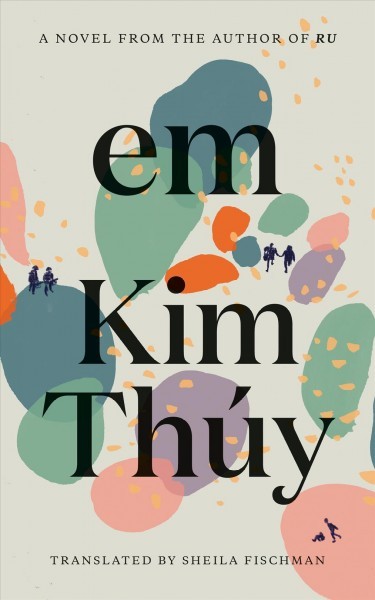

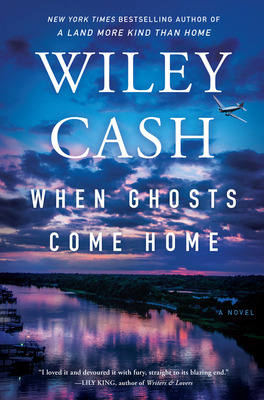
Leisurely Paced Historical Fiction: book recs
Chorus by Rebecca Kauffman
For readers of Alice Munro, Elizabeth Strout, and Claire Lombardo, Chorus shepherds seven siblings through two life-altering events—their mother's untimely death, and a shocking teenage pregnancy—that ultimately follow them through their lives as individuals and as a family.
The seven Shaw siblings have long been haunted by two early and profoundly consequential events. Told in turn back and forth over time, from the early twentieth century through the 1950s, each sibling relays their own version of the memories that surround both their mother's mysterious death and the circumstances leading up to and beyond one sister's scandalous teenage pregnancy. As they move into adulthood, the siblings assume various new roles: caretaker to their aging father, addict, enabler, academic, decorated veteran, widow, and mothers and fathers to the next generation.
Entangled in a family knot, each sibling encounters divorce, drama, and death, while haunted by a mother who was never truly there. Through this lens, they all seek not only to understand how her death shaped their family, but also to illuminate the insoluble nature of the many familial experiences we all encounter—the concept of home, the tenacity that is a family’s love, and the unexpected ways through which healing can occur.
Chorus is a hopeful story of family, of loss and recovery, of complicated relationships forged between brothers and sisters as they move through life together, and of the unlikely forces that first drive them away and then ultimately back home.
Em by Kim Thúy, Sheila Fischman (Translation)
In the midst of war, an ordinary miracle: an abandoned baby tenderly cared for by a young boy living on the streets of Saigon. The boy is Louis, the child of a long-gone American soldier. Louis calls the baby em Hồng, em meaning little sister, or beloved. Even though her cradle is nothing more than a cardboard box, em Hồng's life holds every possibility.
Through the linked destinies of a family of characters, the novel takes its inspiration from historical events, including Operation Babylift, which evacuated thousands of biracial orphans from Saigon in April 1975, and the remarkable growth of the nail salon industry, dominated by Vietnamese expatriates all over the world. From the rubber plantations of Indochina to the massacre at My Lai, Kim Thúy sifts through the layers of pain and trauma in stories we thought we knew, revealing transcendent moments of grace, and the invincibility of the human spirit.
The Perfect Golden Circle by Benjamin Myers
Summer 1989, rural England, the tail end of long decade of mass unemployment, class war and rebellion, and the continued destruction of the English countryside.
Over the course of a burning hot summer, two very different men - traumatized ex-soldier Calvert, and affable and chaotic Redbone - set out nightly in a decrepit camper van to undertake an extraordinary project. Under cover of darkness, the two men traverse the fields of rural England in secret, forming crop circles in elaborate and mysterious patterns, designs so intricate that they inspire the kind of awe that the ancient Gothic cathedral in nearby Salisbury once inspired.
As the summer wears on, and their designs grow ever more ambitious, the two men find that their work has become a cult international sensation - and that an unlikely and beautiful friendship has taken root as the wheat ripens from green to gold.
But as harvest-time beckons -- and as media and the authorities begin to take too much interest in their work-- Calvert and Redbone have to race against time to finish the most stunning and original crop circle ever conceived: the Honeycomb Double Helix.
When Ghosts Come Home by Wiley Cash
When the roar of a low-flying plane awakens him in the middle of the night, Sheriff Winston Barnes knows something strange is happening at the nearby airfield on the coast of North Carolina. But nothing can prepare him for what he finds: a large airplane has crash-landed and is now sitting sideways on the runway, and there are no signs of a pilot or cargo. When the body of a local man is discovered—shot dead and lying on the grass near the crash site—Winston begins a murder investigation that will change the course of his life and the fate of the community that he has sworn to protect.
Everyone is a suspect, including the dead man. As rumors and accusations fly, long-simmering racial tensions explode overnight, and Winston, whose own tragic past has followed him like a ghost, must do his duty while facing the painful repercussions of old decisions. Winston also knows that his days as sheriff may be numbered. He’s up for re-election against a corrupt and well-connected challenger, and his deputies are choosing sides. As if these events weren’t troubling enough, he must finally confront his daughter Colleen, who has come home grieving a shattering loss she cannot fully articulate.
As the suspense builds and this compelling mystery unfolds, Wiley Cash delves deep into the hearts of these richly drawn, achingly sympathetic characters to reveal the nobility of an ordinary man struggling amidst terrifying, extraordinary circumstances.
#historical fiction#historical#adult fiction#to read#tbr#leisure#leisurely paced novels#to be read#Book Recommendations#reading recommendations#book recs#library books#books to check out
2 notes
·
View notes
Text
Defending Britain in a More Dangerous World

Grant Shapps' Vision for National Security
Defence Secretary Grant Shapps recently delivered a compelling speech at Lancaster House in London, addressing the evolving threats facing Britain and the measures needed to ensure national security. Reflecting on the past, Shapps drew parallels with the optimism of the post-Cold War era, noting how contemporary threats differ significantly from those of the past.
The Following is the Exact Speech as Delivered
Thirty-five years ago, Margaret Thatcher gave a short speech here in Lancaster House.
She spoke of her optimism about the changes taking place between East and West. Barely two weeks later the Berlin Wall fell.
It was the dawn of a new era. Existential threats were banished. And a new global feel good factor spread to Defence.
This was the age of the peace dividend. The notion that while our defences should be maximised at times of tension they could be minimised in times of peace.
Conflict didn’t disappear of course. But with no great power menacing the continent, peace gave the impression of being just around the corner.
Yet, not everyone got the memo. In fact our adversaries were mobilising.
The belligerent autocratic state was making a comeback - havin got away with the illegal annexation of Crimea in 2014, Putin launched his brutal invasion of Ukraine eight years later.
And as Russia continues its illegal campaign in Ukraine, China is assessing whether the West loses its patience.
Today, Russia and China have been joined by new nuclear, and soon to be nuclear, powers.
North Korea promising to expand its own nuclear arsenal.
And then there is Iran, whose enriched uranium is up to 83.7%, a level at which there is no civilian application.
Back in the days of the Cold War there remained a sense that we were dealing with rational actors.
But these new powers are far more unstable, and irrational.
Can we really assume the strategy of Mutually Assured Destruction that stopped wars in the past will stop them in future, when applied to the Iranian Revolutionary Guard or North Korea?
I am afraid we cannot.
Particularly since there is now another new worrying consideration: Our adversaries are now more connected with each other.
For example, we have seen how Iranian proxies are causing havoc from Israel to the Red Sea.
That Russia has what the two countries describe as a “no limits partnership” with China - with whom they conduct regular joint exercises.
Meanwhile, Putin is relying on Iranian drones and North Korean ballistic missiles to fuel his illegal bombardment in Ukraine.
With friends like these, the world is becoming more dangerous and has done in recent years.
But the other threats that plagued the start of the 21st century haven’t gone away.
The spectre of terrorism and threats from non-state actors, as October 7 showed, still haunts the civilised world.
Put it all together, and these combined threats risk tearing apart the rules-based international order – established to keep the peace after the Second World War.
Today’s world then, is sadly far more dangerous.
With the UN reporting that we are facing the highest number of violent conflicts since the Second World War.
Now some argue these threats are not existential to the UK.
And yet, what happens elsewhere, quickly happens here.
In the past few years we’ve seen terror attacks on the streets of London, attempted assassinations in Salisbury, theft of Intellectual Property, attempted interference in our political processes, a cost-of-living crisis, brought to you by Putin, that’s hurting families here at home.
And now, our trade. 90 per cent of which comes by sea, is the target of terrorists.
Proving that not only do our adversaries have the intent to target us but they have a widening array of weapons with which to wreak havoc.
In our online world our adversaries don’t need to jump in a tank board a sub or strap into a fighter jet to hurt us.
Cyber warfare simply means hacking into our networks and watching the economic carnage unfold.
Last year, almost a third of businesses in the UK suffered a cyber breach or attack. And the total cost to the UK economy runs into billions.
We know significant numbers of these attacks come from Russia and China where they are also developing satellite killing technology, capable of degrading us from space.
Even mass migration can be cynically used against us as a weapon of war, as Poland, Norway, and Finland have been experiencing.
In other words, nation states plus non-state actors with greater connections between them plus more creative weapons all adds up to more trouble for the world.
Over the last decade this government has made great strides to turn the Defence tanker around.
The refreshes of the Integrated Review and Defence Command Paper have been instrumental in ensuring Britain is defended in this more dangerous world.
We’ve uplifted our defence spending – investing billions into modernising our Armed Forces and bringing in a raft of next generation capabilities, from new aircraft carriers to F35s; from new drones to Dreadnought submarines; from better trained troops; to the creation of a national cyber force.
And when the world needed us, we have risen to the moment.
Giving Ukraine our unwavering support and galvanising others to their cause, including with our biggest ever funding package, announced last week.
Taking action, we work to stamp out the global ambitions of Daesh.
We’ve acted at the forefront of global responses to maintain regional stability after October 7th by sending a Royal Navy Task Group, a company of Royal Marines, surveillance planes and lifesaving aid to Gaza.
And taking a lead role within global forces to protect freedom of navigation in the Red Sea.
Not only that but we’ve strengthened Britain’s place in the world with expanded partnerships from the Gulf to the Indo-Pacific.
We’re playing a major part in stirring the West into a renewed commitment to defence, using our 2014 NATO summit in Newport to bring Alliance nations together to stop the rot, by committing to spending 2 per cent of GDP on Defence.
Today, for the very first time this government is spending more than £50bn a year on Defence in cash terms, more than ever before.
And we have made the critical decision to set out our aspiration to reach 2.5% of GDP spent on defence.
And as we stabilise and grow the economy, we will continue to strive to reach it as soon as possible.
But now is the time for all allied and democratic nations across the world to do the same.
And ensure their defence spending is growing.
Because, as discussed, the era of the peace dividend is over.
In five years’ time we could be looking at multiple theatres involving Russia, China, Iran and North Korea.
Ask yourselves – looking at today’s conflicts across the world - is it more likely that the number grows, or reduces?
I suspect we all know the answer – it’s likely to grow. So, 2024 must mark an inflexion point.
For Ukraine, this will be a year when the fate of their nation may be decided.
For the world, this will be the greatest democratic year in history with nearly half of the world’s population going to the polls.
And for the UK it must also be a moment to decide the future of our national defences. The choice is stark.
Some people, especially on the left, have a tendency to talk Britain down.
They believe Britain can no longer have the power to influence world events.
That we should somehow shrink into ourselves and ignore what’s happening beyond our shores.
I passionately believe these unpatriotic, Britain belittling doom-mongers are simply wrong.
Their way would lead us sailing blindly into an age of autocracy. So we must make a different choice.
And the history of our great island nation shows us the way.
Britain has often accomplished the seemingly impossible before. Our history is littered with moments when we faced down the threat and triumphed.
But looking ahead, we are in a new era and we must be prepared to deter our enemies, lead our allies, and defend our nation.
In terms of deterrence, it’s about the UK gaining a strategic advantage over our enemies.
The foundation of that advantage is, of course, our nuclear enterprise.
At a time of mounting nuclear danger, our continuous at sea deterrent provides the ultimate protection.
And that’s why we are spending around £31bn to bring in next generation Dreadnought submarines and upgrade our deterrent.
In a more contested world, we need to bring that same goal of deterrence to our conventional forces – so we have made modernisation a critical priority.
Taking the long-term capability decisions we need to transform our Armed Forces into a formidable deterrent.
Enabling them to maintain the UK’s strategic advantage and empowering them to be able to deliver the outcomes we need in multiple theatres at once.
The growing success of that work was powerfully shown last week when, in less than 24 hours, the UK was able to both take action to defend ourselves against the Houthis and uplift our support to Ukraine to new record levels.
If Putin thought we’d be distracted by the events in the Middle East then last week, because of the long-term decisions this government has taken, his hopes were surely dashed.
In a complex world, no nation can afford to go it alone, so we must continue strengthening our alliances so the world knows they cannot be broken.
Defence is in many ways the cornerstone of our relations across the world.
Our world leading Armed Forces, cutting-edge industrial base and willingness to support our allies is the reason why Britain is the partner of choice for so many.
And among our partnerships, NATO remains pre-eminent. 75 years after its foundation, today NATO is bigger than ever.
But the challenges are bigger too.
That’s why the UK has committed nearly the totality of our air, land and maritime assets to NATO.
But, in 2024, I am determined to do even more.
Which is why I can announce today that UK will be sending some 20,000 personnel to lead one of NATO’s largest deployments since the end of the Cold War, Exercise Steadfast Defender.
It will see our military joining forces with counterparts from 30 NATO countries plus Sweden, providing vital reassurance against the Putin menace.
Our carrier strike group will be out in full force, with our magnificent flagship HMS Queen Elizabeth leading the way.
And flying from her decks will be the fifth generation F35 lightning jets, accompanied by a fearsome phalanx of frigates, destroyers and helicopters.
We’ll also have a submarine patrolling the depths and one of our Poseidon P8 aircraft conducting surveillance from the skies above, and more than 400 of our brilliant Royal Marines will be training in the Artic Circle, contending with some of the toughest environments anywhere on the planet.
On land, we’ll be deploying over 16,000 soldiers, led by our 7th Light Mechanised Brigade Combat Team which superbly led our recent response in Kosovo.
All of which, makes this our largest deployment of land forces to NATO for 40 years.
But NATO is only part of our rich tapestry of partnerships.
And this government has taken bold decisions to embark on the partnerships we need to defend ourselves from a more dangerous world.
We are rapidly building our AUKUS partnership.
And last month I signed our Global Combat Air Partnership (or GCAP) with Japan and Italy.
These projects are not just about building nuclear powered subs, sixth generation fighter planes, and innovating in all forms of Defence.
They are about sharpening our strategic edge so we can maintain our advantage over our adversaries.
They are precisely the deep relationships needed to preserve national and regional security.
And they’re emblematic of the way we will work in the future.
But it’s not enough to deter. We must lead. Standing up for our values around the world.
And Ukraine is a test case.
This year, its future may well be decided.
Valiant Ukrainian warriors have had incredible success pushing back invading Russian forces, retaking 50 per cent of the territory stolen by Russia, opening up a maritime passage in the Black Sea.
But the West must not let them down.
British leadership has already had a galvanising effect.
We’ve convened some 10 countries to help Ukrainians train here in the UK.
And today I can announce that our programmes have now trained over 60,000 Ukrainian troops since Russia launched its invasion of Ukraine in 2014.
Last month, I launched a new maritime coalition with Norway to defend Ukraine’s maritime flank.
Since then, over 20 partner nations have joined that coalition.
But the international community cannot let this support slip.
Putin believes the West lacks staying power.
And since the future of the world order is at stake, we must prove him wrong.
Rewarding his war with victory would only increase the risk of escalation.
Not only because he’s hell bent on rebuilding the Russian empire.
But because it would signal weakness to other would-be aggressors.
That is why on Friday the Prime Minister signed the historic UK-Ukraine Agreement on Security Cooperation.
The start of a 100-year alliance that we are building with our Ukrainian friends.
It sees us increasing our military support to £2.5bn – taking the total of UK military aid to more than £7bn. With even more gifted directly from the UK’s equipment inventory.
£200m will be pressed into producing and procuring thousands of drones, including surveillance and long-range strike drones.
This continues the UK’s proud record as a leading donor - always being the first to get Ukraine exactly what they need.
The UK was the first to provide Ukraine with weapons training, the first to provide NLAW anti-tank missiles, the first to give modern tanks, the first to send long range missiles.
Now we will become the largest provider of drones too.
These will be manufactured here in the UK in tandem with international partners, helping to enhance our unmanned vehicle capabilities at home too.
But our new agreement with Ukraine is about so much more than money.
It formalises our support in everything from intelligence sharing and cyber security to medical and military training.
And it sees us taking the first giant step towards a century long partnership.
Britain understands that the battle in Ukraine is existential, it proves there is no such thing as an isolated conflict.
And that to shore up the international order, we must be able to act globally.
So, just as we were there to help evacuate British citizens from Sudan last year, just as we are working with partners to ensure the territorial integrity of our Commonwealth ally Guyana, we have also been a critical part of the US-led international operation to protect freedom of navigation in the Red Sea and the Gulf of Aden.
Some 15 per cent of the world’s shipping passes through these narrow shipping lanes.
But the Houthis have persistently violated the law by menacing commercial vessels in the region.
In the Red Sea we have seen how our brilliant Royal Navy had to act to defend itself against the intolerable and growing number of Houthi attacks.
And earlier this month the world sent a very clear message to the Iranian-backed Houthis.
End your illegal and unjustified actions. Stop risking innocent lives. Cease threatening the global economy.
We could not have been clearer with our warnings, which they chose to ignore.
And enough was enough.
So last Thursday, the Prime Minister and I authorised RAF precision strikes using four RAF Typhoon FGR4s and supported by two Voyager air refuelling tankers.
The result is the Houthis have been dealt a blow.
Our decisive response in the Red Sea and our uplift in support for Ukraine offer a direct blueprint for how the UK must continue to lead in the future.
Offering our unwavering support to our allies, and in times of struggle galvanising global responses to any malign actor seeking to break the rules based international order, and acting decisively when the moment calls for us to defend ourselves.
So, deter and lead, which brings me to the final essential element of being prepared. Defending our nation.
If we are to defend our homeland, we must ensure our entire defence eco-system is ready.
Firstly, we must make our industry more resilient to empower us to re-arm, re-supply and innovate far faster than our opponents.
There’s a huge opportunity here for British industry.
The UK has long been a by-word for pioneering technologies.
We gave the world radar, the jet-engine and the world wide web.
We’ve not lost that spark of creativity.
On the contrary, today the UK is one of only three $1 trillion tech economies.
But just imagine what we could do if we managed to better harness that latent inspiration, ingenuity and invention for the Defence of our nation?
Just think about the game-changing tech we could supply to our brave men and women.
From the pilots ready to scramble at a moment’s notice to the soldiers protecting NATO’s flanks from Putin’s fury.
To the sailors deployed across the seven seas to secure our prosperity.
To our absolutely essential Royal Marine Commandos, without whom we could not properly defend our nation.
To those you will never see and never know but who are out there, giving their all, on your behalf.
They are the cornerstone of our defence and we owe them an unimaginable debt of gratitude.
Which is why my commitment to getting them what they deserve is iron cast.
After all, our greatest resource has always been the men and women who work tirelessly to protect our great nation.
But to defend our nation from the increasing dangers of tomorrow, they must have what they need to do the job.
That’s why this Conservative government has always and has already taken vital steps to increase defence spending, approving the largest sustained increase in defence spending since the Cold War – injecting a further £5 billion last year to replenish our stocks and modernise our nuclear enterprise.
Delivering the largest cash terms defence budget ever. Spending over £50 billion on the defence of our nation.
And just last week, not only maintaining our support to Ukraine but increasing it to its highest level ever.
To some the costs may seem steep – but Britain cannot afford to reverse the spending gains we have made.
And under this Conservative government we never will.
And we will use our influence to ensure other allies and friends, faced with this new reality, and match our commitment.
So, we find ourselves at the dawn of a new era. The Berlin Wall a distant memory.
And we have come full circle.
Moving from a post-war to a pre-war world.
An age of idealism has been replaced by a period of hard-headed realism.
Today our adversaries are busily rebuilding their barriers.
Old enemies are reanimated. New foes are taking shape. Battle lines are being redrawn.
The tanks are literally on Europe’s Ukrainian lawn.
Read the full article
#AutocraticStatesThreat#DefenseSpendingandModernization#GlobalSecurityInitiatives#GlobalThreatLandscape#GrantShappsDefenceSpeech#NuclearPowerRisks#RussiaandChinaSecurityChallenge#UKandNATOAlliance#UKDefenseStrategy#UKNationalSecurity
0 notes
Text
Art Theory and Criticism - Journal reflection 11
The origins and analysis of Romanticism
When analysing a specific movement and period, one must understand what influenced the artists of the movement from their previous masters of the time and style that came before them. Whether the new style was developed to reject a previous ideology, thus becoming a consequence of the era that came before or was simply adopted based on new discoveries and observations, it is certainly evident that the history of art evolves but always with references. A movement that has a deep history and origin is the Romanticism period. Aside from the movement spreading across all of Europe and later the United States, it did not only involve the visual arts, but also music, literature and even branches of philosophy (Wilder, 2021.)
The origins of the Romanticism movement boil down to the word ‘romantic’ varying from definitions of describing several intermingling languages spoken around Rome during the Classical period along with the associated fantastical stories of knights saving the damsel in distress princess from the dragon (Alliterative, 2016.) further analysing the origins of the Romantic period came the inspiration from the Grimm brothers gathering various German folk tales and huge Gothic architecture with pointed arches directing the eye up to the sky which indicated the heavens.

Figure 1: The Kiss, Francesco Hayez, c. 1859.
According to Alliterative (2016) inspiration from Edmund Burke’s 18th century treatise on aesthetics concerning Sublime represented in the visual arts and landscape painting, made for a breakthrough in rejecting the neo-classical period that came before Romanticism. This rejection stems from the Neo-classical period embracing logic and rationality, which the Romantics replaced with passion, expression, and the individual’s moral qualities. This sparked further reference to the sublime, fairy-tale folklore and fantastical elements of medieval stories that was present in the previous centuries.
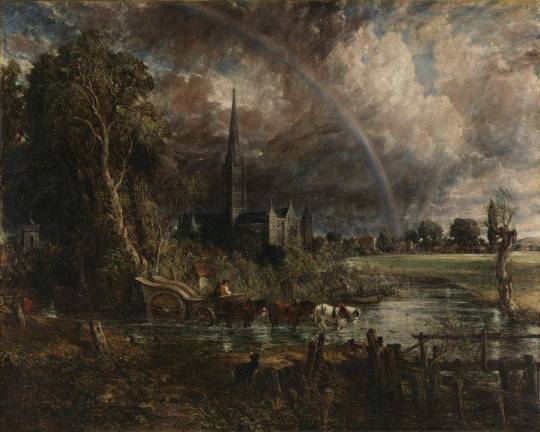
Figure 2: John Constable, Salisbury Cathedral from the Meadows, exhibited 1831.
However, this knowledge came only to the privileged, as only the wealthy could realistically have time to think about these things and fantasise about them, while also delving into the literature, music and visual arts that broadened their horizons on the matter. Which is why it is very ironic that this class of people would sympathise with these famous stories of the period like Victor Hugo’s ‘The Hunchback of Notre Dame’, ‘Les Misérables’, and Mary Shelly’s ‘Frankenstein, as stated by Wilder (2021):
All three works are outcries against man's inhumanity to man. To drive home the point, the writers magnify the inhumanity so we can see it better. They do this by directing it against outcasts: a hunchback, an ex-convict, and a manmade monster. The more of an outsider someone is, the more people abuse that person.
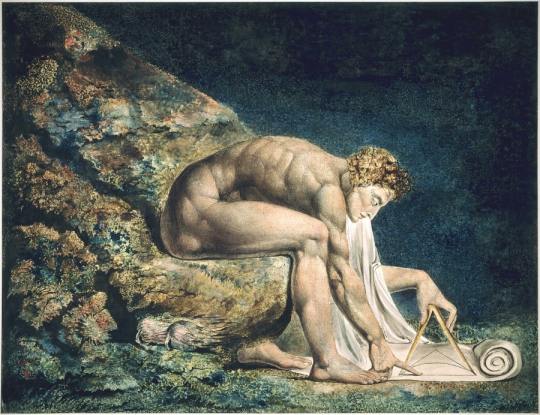
Figure 3: Newton, William Blake, c. 1804-1805.
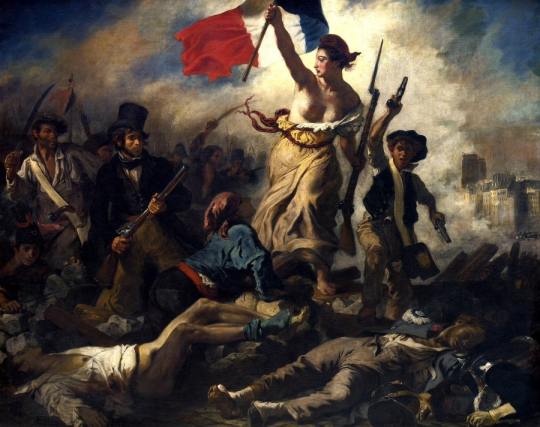
Figure 4: Liberty Leading the People, Eugène Delacroix, c. 1830.
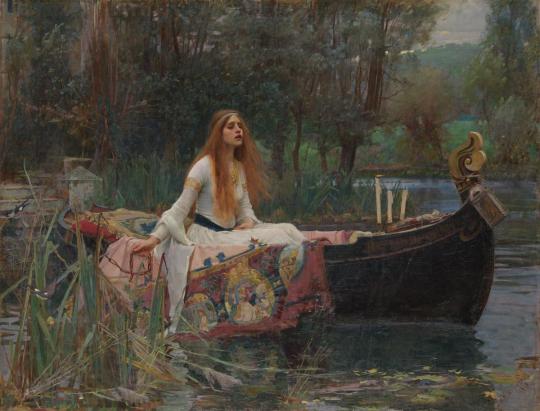
Figure 5: John William Waterhouse, The Lady of Shalott, 1888.
Overall, it was a positive movement that gave hope to its followers by encouraging the belief of one’s morals and the goodness of man that can be hidden under trauma, rejection, and disastrous events. Many of the revolutions and political crises that dragged along in struggle for decades was still fresh in these people’s minds. They wanted to enjoy the bright side of life along with appreciating nature’s sublime quality that reminded them of man’s insignificance of his fruitless struggles in war. In a way, this was their escapism from the darker times that still haunted them, along with humanity's dark side that creeps out in due time.
Reference list:
Alliterative, 2016. Sublime: The Aesthetics & Origins of Romanticism. YouTube. Available at: <https://www.youtube.com/watch?v=au-z2jVaTNk> [Accessed 7 January 2024].
Wilder, J.B., 2021. Defining Romanticism in the Arts. [online] dummies. Available at: <https://www.dummies.com/article/academics-the-arts/art-architecture/art-history/defining-romanticism-in-the-arts-200515/> [Accessed 7 January 2024].
0 notes
Note
10, 13, and 16 for the horror movie ask game! :)
10. a horror movie you wish you could watch again like its the first time
I can think of two!
The Thing. I remember seeing that for the first time and my jaw was on the floor the entire time.
Skinamarink. I saw it in theaters and don't think I've ever been that tense for an entire movie.
13. Horror movie with the best soundtrack.
I loved all of the music for Annihilation. Anything Ben Salisbury and Geoff Barrow touch I want to listen to constantly, and I looooooved every song in that movie.
16. Horror movie that ignited your love in the genre.
I used to be a huge weenie and was terrified of horror. At one point though, I started watching really campy and old horror movies that were mostly made between the 20s and 60s because I thought they'd be less scary. House on Haunted Hill was one of the first ones I saw, and I was obsessed. I started watching so many older horror films from there and I loved all of them, so eventually I worked my way up to more modern and scarier films.
1 note
·
View note
Text
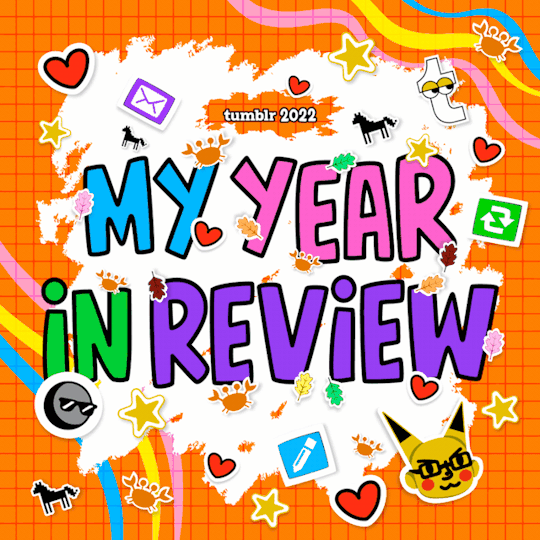
I posted 1,922 times in 2022
282 posts created (15%)
1,640 posts reblogged (85%)
Blogs I reblogged the most:
@corneliushickey
@saltforsalt
@coweyed
@thegleamoftheknife
@autisticgod
I tagged 1,755 of my posts in 2022
Only 9% of my posts had no tags
#hotd - 155 posts
#roach.txt - 111 posts
#hotd blogging - 84 posts
#nbc hannibal - 69 posts
#🪳 - 62 posts
#currently reading - 44 posts
#les mis - 44 posts
#ask tag - 39 posts
#rhaenyra - 37 posts
#les mis blogging - 34 posts
Longest Tag: 139 characters
#when yr ex husband comes from from eight months at sea!!! oooooh he comin' off way too pushy i hope he don't think he was gettin this pussy
My Top Posts in 2022:
#5

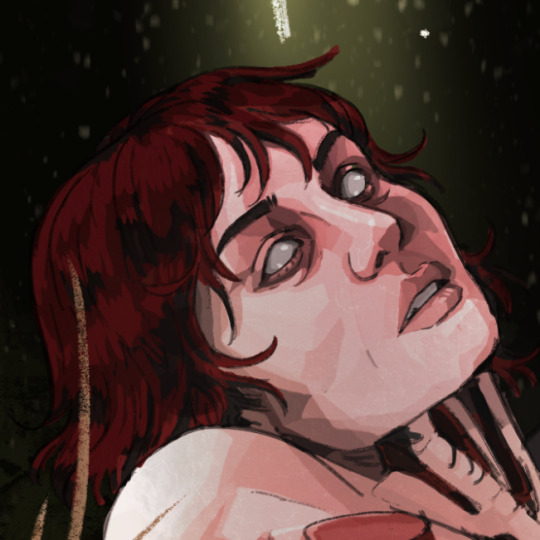
See the full post
335 notes - Posted April 18, 2022
#4
kink at the barricade
352 notes - Posted September 15, 2022
#3


See the full post
369 notes - Posted November 14, 2022
#2
The basic elements of a proper Gothic romance require a heroine of pure heart that must travel, often across the world, guided by her love for a dark, brooding gentleman of aristocratic origins. They will often take residence in a haunted building in which a deep secret is stored (often involving wealth, treasure, or ancestral secrets) only to be revealed by our heroine's journey. Often the characters represent sides of a single self. Almost as if the edifice was the mind, the self and its deepest catacombs, the id — with the festering horrors of the past.
Historically, the Romantic movement was a rebellious tide crashing against the dry, uncaring shores of reason. A movement that was sparked by the poetry of ruins and decay and the inexorable attraction of human emotion at its basest.
Thus, a Gothic romance lives and dies on two things: the fortitude of its heroine and the power of its villain. And so, casting our film became quite a complex process. The list of actors that I really wanted was quite short — I hoped for a heroine that was sophisticated intellectually but emotionally vulnerable to the myth of perfect love (even if she denied it publicly). I needed a character with a very strong backbone but a certain innocence to the ways of the world. She had a fierce mind, but her knowledge of the world all came from books and imaginary characters. When Mia Wasikowska became a candidate I was elated: In her past work, she always struck me as someone that seemed to be very assured of herself but timid and private. And then, Jessica Chastain and Tom Hiddleston emerged as the perfect Gothic villains — able to deliver the tough moments but capable of illuminating their actions to reveal the vulnerability, the humanity, beneath. There needed to be a reason and a true humanity behind their actions, no matter how grotesque.
Guillermo del Toro discussing the casting of Crimson Peak in the Foreword to Crimson Peak: The Art of Darkness by Mark Salisbury
402 notes - Posted July 10, 2022
My #1 post of 2022
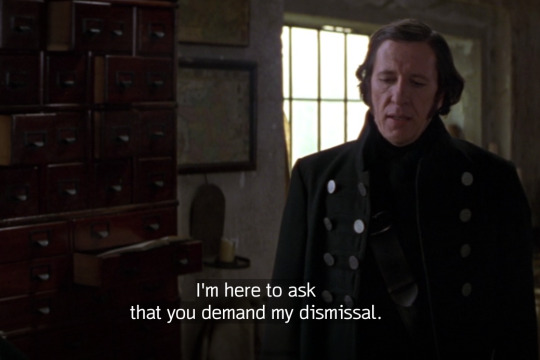

See the full post
483 notes - Posted April 8, 2022
Get your Tumblr 2022 Year in Review →
3 notes
·
View notes
Text
Men (2022)
Directed by Alex Garland
Cinematography by Rob Hardy
Starring Jessie Buckley, Rory Kinnear and Paapa Essiedu
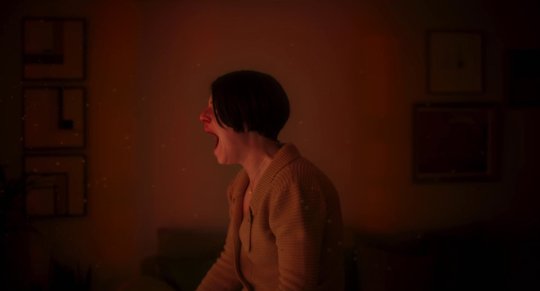
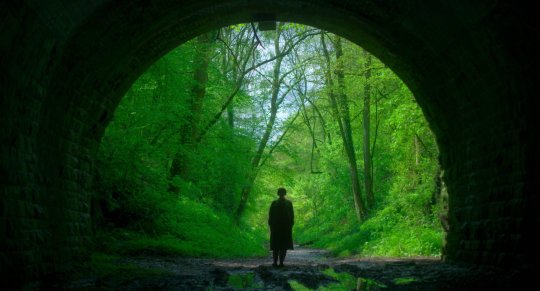


”I think you need to be understood. And I do understand. I can fully imagine it must be dreadful for you. And, inevitably, you also feel an awful sense of guilt. And that haunts you too. The seared snapshot image. Why, yes, you carry it. You see it when you close your eyes. But also, you ask yourself repeatedly, "What if? If only."”
0 notes
Photo
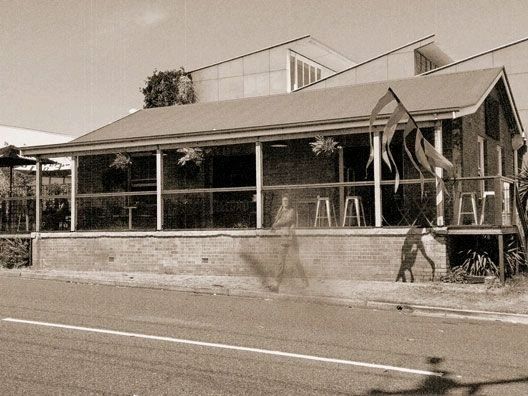
High-stakes reporting & historic hauntings... Story #artwork from the choose your adventure "Rumours Uncut" on the Story City app for a retro #WWII Vibe. Thanks for the inspiration @midnightmuser1 & for the creepy photos Ori De Lune #ghost #journalism #brisbane #moorookaward #WWII #historicfiction Many thanks to Councillor Steve Griffiths for activating and revitalising Moorooka streets by sponsoring this adventure! (at Salisbury, Brisbane) https://www.instagram.com/p/CoNfiz8PODW/?igshid=NGJjMDIxMWI=
0 notes
Text
Ex Machina Movie Review (Sci-Fi Classic)
By Joseph Correa
Follow @Frontproofmedia!function(d,s,id){var js,fjs=d.getElementsByTagName(s)[0],p=/^http:/.test(d.location)?'http':'https';if(!d.getElementById(id))(document, 'script', 'twitter-wjs');
"Ex Machina" is a 2014 science fiction film directed by Alex Garland (his directorial debut) and starring Domhnall Gleeson, Oscar Isaac, and Alicia Vikander. The plot centers around a young programmer, Caleb (Domhnall Gleeson), who is invited to administer the Turing test to an intelligent humanoid robot, Ava (Alicia Vikander), created by Nathan (Oscar Isaac), the reclusive CEO of the internet company Bluebook. Caleb's task is to determine whether Ava has true consciousness, but he soon finds himself drawn into a power struggle between Ava and Nathan, with unexpected and dangerous results.
The film's themes and tone revolve around the question of what it means to be human and the morality of creating artificial intelligence. The relationship between Ava, Caleb, and Nathan is complex and multi-layered, with each character harboring secrets and ulterior motives. The film effectively creates a sense of isolation and unease with its setting of a remote, high-tech research facility. The film also explores the theme of power dynamics, as Nathan is the creator of Ava and uses his power to manipulate and control her.
The performances of the three main actors are all excellent, particularly Oscar Isaac's portrayal of the eccentric and enigmatic inventor Nathan. Isaac is able to convey Nathan's intelligence, charm, and manipulation all at the same time. Alicia Vikander as Ava is also great, her performance of a machine learning to be human is both convincing and thought-provoking. Vikander's Ava is a perfect representation of the theme of the film, her body language and facial expressions are used to great effect to communicate Ava's inner thoughts and feelings. Domhnall Gleeson as Caleb is the audience's point of view, and he does a great job of making the audience question their own assumptions about the nature of consciousness.
The film also boasts impressive production design and special effects, effectively creating a sense of isolation and unease. The research facility Nathan lives in is a work of art on its own, the use of glass and metal creates a sense of coldness, which is then contrasted by the warm and organic design of Ava's chamber. The score, by Geoff Barrow and Ben Salisbury, is also noteworthy, adding to the overall eerie atmosphere of the movie. The score is both haunting and beautiful, it's a perfect representation of the theme of the film.
The direction and editing are both top-notch, creating a sense of tension and uncertainty throughout the film. The pacing is steady, and the dialogue is sharp and well-written. The story is also well-structured, with a series of twists and turns that keep the audience guessing until the very end. The film's climax is both thrilling and thought-provoking. It forces the audience to question their own assumptions about artificial intelligence.
In conclusion, "Ex Machina" is a thought-provoking and expertly crafted film that leaves a lasting impression. It raises important questions about the ethics of artificial intelligence and the consequences of playing God. The film manages to be both intellectually stimulating and emotionally engaging, it resonated with me in a way that few movies do. The performances, direction, and cinematography are all outstanding, and the score is hauntingly beautiful. The film is not for everyone, as it can be slow-paced, and some viewers may find it hard to connect with the characters. But for those who are looking for a thought-provoking film, "Ex Machina" is a must-see. The film is a perfect representation of the theme of the film, it's a film that will make you question the nature of consciousness and the morality of creating artificial intelligence. It's a film that will make you question your own humanity. It's a film that will make you think long after you've left the theater, and it's a film that I believe will be considered a classic in the science fiction genre for years to come.
0 notes